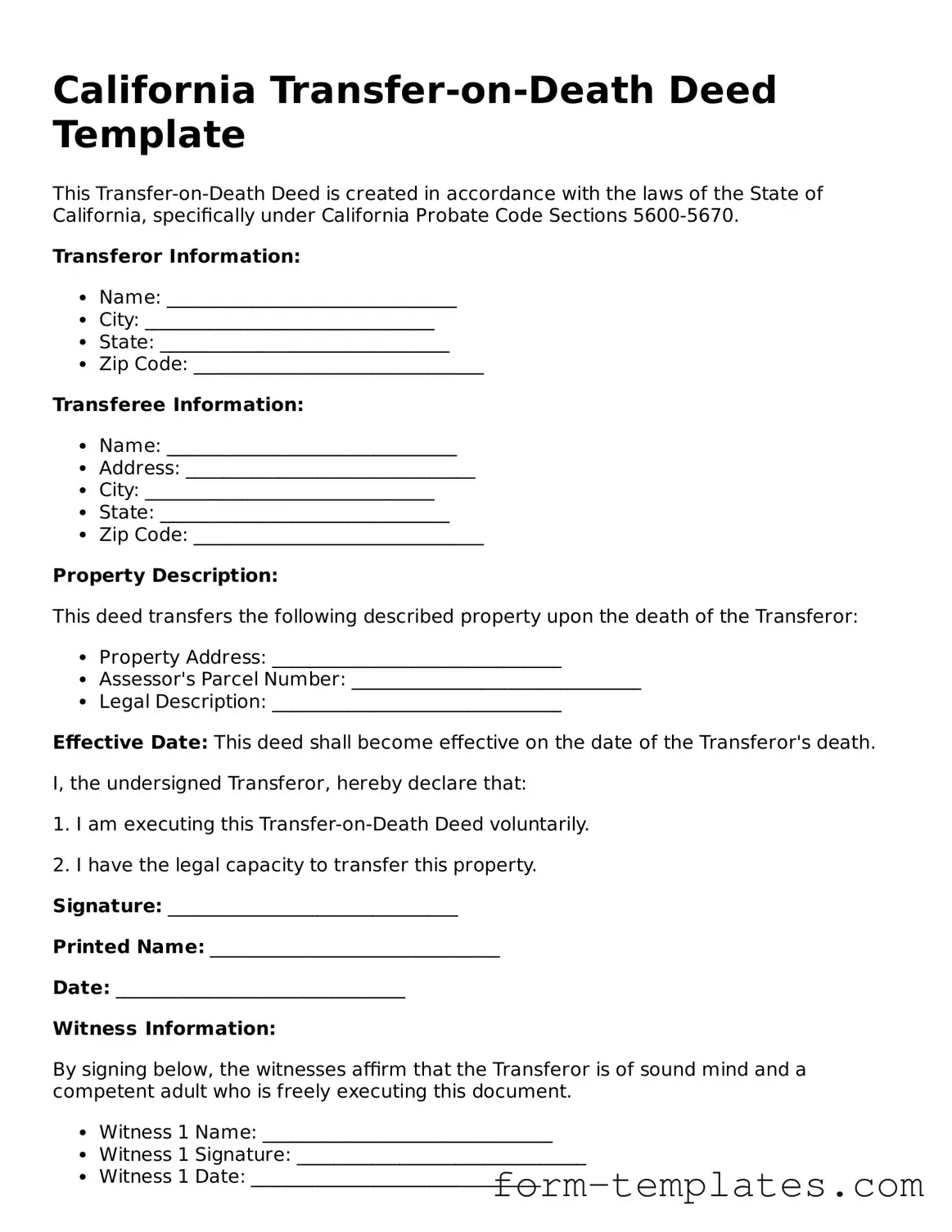California Transfer-on-Death Deed Template
This Transfer-on-Death Deed is created in accordance with the laws of the State of California, specifically under California Probate Code Sections 5600-5670.
Transferor Information:
- Name: _______________________________
- City: _______________________________
- State: _______________________________
- Zip Code: _______________________________
Transferee Information:
- Name: _______________________________
- Address: _______________________________
- City: _______________________________
- State: _______________________________
- Zip Code: _______________________________
Property Description:
This deed transfers the following described property upon the death of the Transferor:
- Property Address: _______________________________
- Assessor's Parcel Number: _______________________________
- Legal Description: _______________________________
Effective Date: This deed shall become effective on the date of the Transferor's death.
I, the undersigned Transferor, hereby declare that:
1. I am executing this Transfer-on-Death Deed voluntarily.
2. I have the legal capacity to transfer this property.
Signature: _______________________________
Printed Name: _______________________________
Date: _______________________________
Witness Information:
By signing below, the witnesses affirm that the Transferor is of sound mind and a competent adult who is freely executing this document.
- Witness 1 Name: _______________________________
- Witness 1 Signature: _______________________________
- Witness 1 Date: _______________________________
- Witness 2 Name: _______________________________
- Witness 2 Signature: _______________________________
- Witness 2 Date: _______________________________
After execution, please file this deed with the county recorder where the property is located to ensure the transfer is recognized upon the death of the Transferor.
